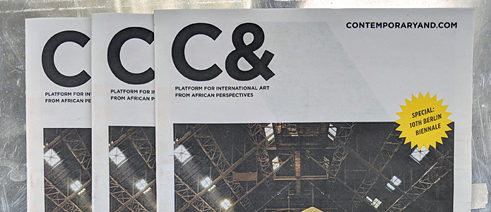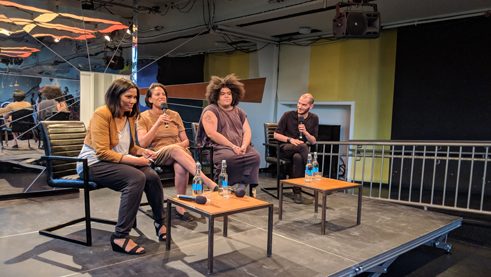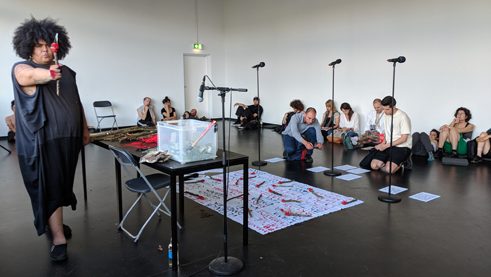C& América Latina
The Fight for Visibility

In 2013 Julia Grosse became an editor-in-chief of the online magazine Contemporary& for contemporary African art, which is produced in collaboration with the Goethe-Institut. Now the magazine Contemporary& América Latina is now available with an enhanced focus on the connections between Africa, Afro-Latin America and the Caribbean. In an interview Grosse talks about discrimination against the Black art scene and identity issues.
You launched Contemporary& América Latina (C&AL), which is an online magazine independent of Contemporary& (C&). How did it happen?
Ever since the founding of C& our focus has always been on contemporary art from Africa and the global diaspora. For the past five years we have also regularly reported on the large Afro-Latin American and Caribbean art scene, from Puerto Rico, Colombia, but above all Brazil. For the 2016 São Paulo Biennial, we decided for the first time to make a complete C& print issue dedicated to Afro-Brazilian perspectives. The launch took place at a cultural centre in the middle of São Paulo and about 400 people attended it.
Such events about the Black art scene in the very centre of the city don’t usually take place during a major art event like the biennial, but in outlying districts. Of course, that made us wonder why. This gave rise to questions about visibility and, above all, non-visibility. But there’s this broad Afro-Brazilian art scene. That motivated us to start our own site in Portuguese, Spanish and English with a focus on Afro-Latin America and the Caribbean.
 Launch of C& América Latina
| Photo: Will Furtado
Launch of C& América Latina
| Photo: Will Furtado
Great need for explanations
Why don’t any larger events for Black artists take place during a biennial like this in São Paulo?The white art scene in Brazil is dominant and very exclusive. Black artists rightly feel sidelined. They have to fight for visibility. This made us think: Instead of repeatedly giving some artists a voice, we decided to create a platform just for them. And we noticed in several countries how great the need for explanations is. In Peru, for example, we heard comments like, “What you’re doing is great, but there are no Afro artists here.”
How do you deal with uninformed comments?
We see it as a challenge. Because it’s not primarily about showing the art world all the Afro-Latin American art. We want to make the networks of artists and curators visible and establish the platform so that creative actors can network from African perspectives.
 A performance by Jota Mombaça during the launch of C& América Latina
| Photo: Will Furtado
A performance by Jota Mombaça during the launch of C& América Latina
| Photo: Will Furtado
Questions about the concept of identity
What are the editorial focal points of Contemporary& and Contemporary& América Latina?The latest print edition of C&, which was presented at the Berlin Biennale, is about a global diaspora and questions about the concept of identity. Apart from that, there will soon be other focus topics, such as the year 1968, which is now fifty years ago, and the question of how a diaspora in Germany experienced it. At C& América Latina, it was important to set marks, to ask questions. What is the status quo? How visible is a Black diaspora in Peru? Or how do people deal with Argentina’s Black heritage? We wanted to introduce these kinds of topics right at the beginning in order to take a closer look at a few important, fundamental situations before concentrating mainly on the visual arts.
You also explore the topic of identity a great deal. What does identity mean to you personally?
I try to avoid the word “identity,” although I am influenced by it, of course. We all are in the end. It’s great to make a magazine where the core team itself has a connection to the diaspora – is part of it. And that may be one aspect of our success.